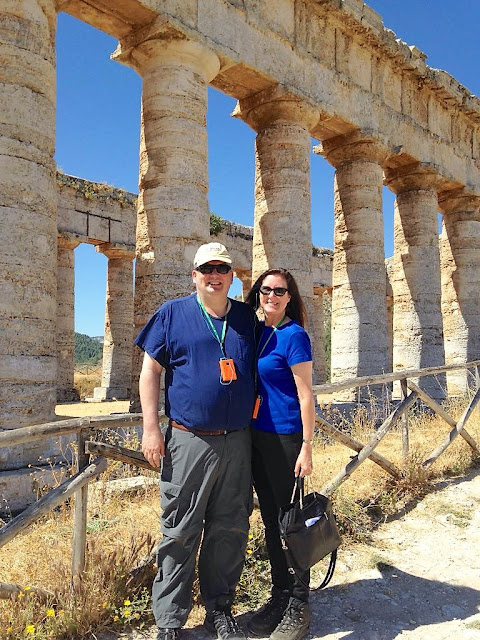While traveling in Sicily, we visited the ancient hilltop town of Segesta, not far from Palermo.
Segesta was founded around 800 B.C. by indigenous people. There is also a legend--Segesta was founded by Aeneas during his long journey around the Mediterranean.
During the centuries after the founding of Segesta, with the arrival of Greeks, the town adopted Greek culture. Later in time, Segesta was taken over by a series of invaders, including the Carthaginians, Romans, Vandals and Normans. Eventually, the town was abandoned.
Today, a portion of the town has been excavated. The ruins are amazing because they are fairly well preserved, especially the Greek theater and temple. Below are some photos from our visit.
The Theater: Segesta has an ancient Greek theater built in the usual style--a semicircular open air building carved into the side of a hill. The semicircular shape was ideal for acoustics. Segesta's theater was built at the end of the 3rd century B.C. and is well preserved, except for the missing structure at the back of the stage.
Below is an artist's rendering of what the theater might have looked like long ago.
The Temple: On a lower hill outside the town, the inhabitants erected a temple at the end of the 5th century B.C. Our guide explained that the temple was started but never completed due to inadequate funding and political issues. Still, what was constructed is still standing and a marvel to see.
 |
| The temple viewed from Segesta's hilltop |
Our guide explained that the Greeks knew how to build temples that could withstand most of the frequent earthquakes in the Mediterranean. One feature was notching the drums of the columns so they fit together like Legos. Also, a lead sheet was placed between the drums. These techniques allowed the columns to rock but not roll.
Our guide also explained that the columns and roof are not perfectly symmetrical. For example, the columns lean slightly toward the middle so that, when seen from afar, they look perfectly straight. We were amazed by the ingenuity of the Greek builders.
 |
| Still standing after all these years and many earthquakes. |
A large portion of Segesta remains to be excavated. Each summer, archaeological teams arrive in Sicily and continue excavating ancient sites like Segesta. Some of the recent excavation work appears in the photos below.
Segesta had other beautiful sights--lovely flowers and beautiful vistas.
 |
| In the distance is the neighboring town of Erice located atop a mountain shrouded in clouds. |
Next Up: Erice













No comments:
Post a Comment